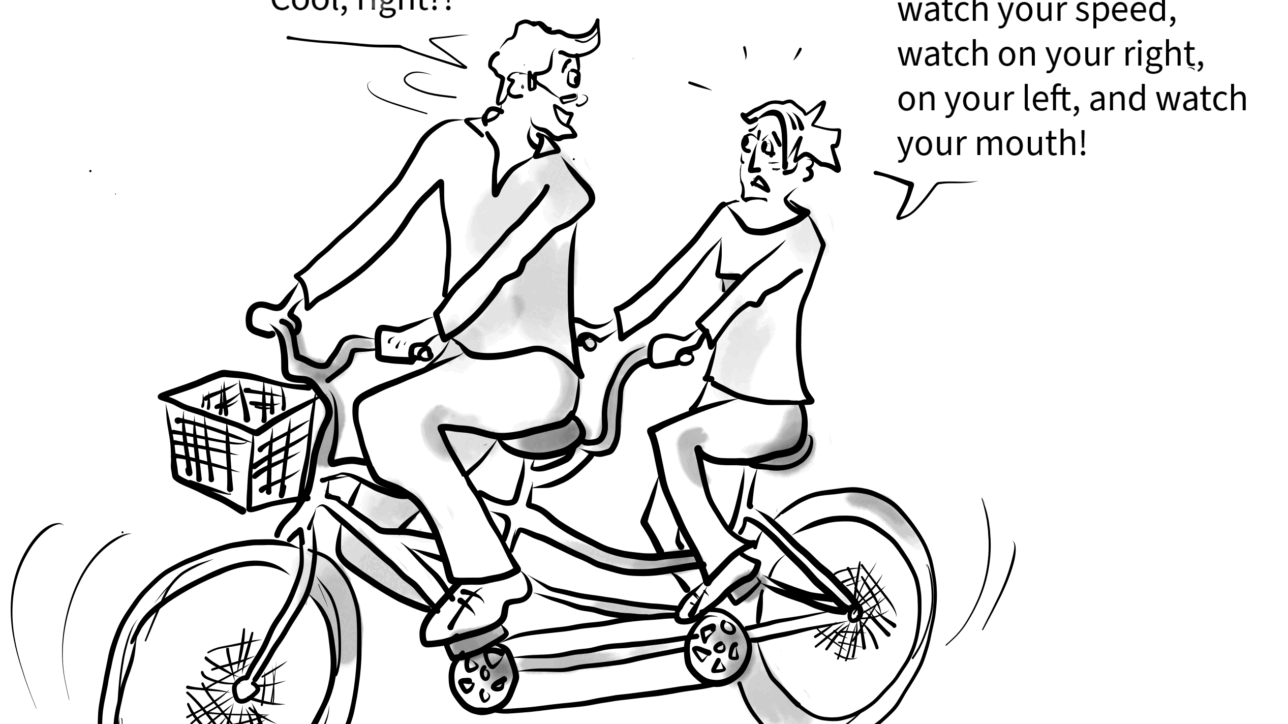When we kick off a presentation with a new team, Jean-Pierre and I are usually nervous (JP is both my work and life partner if you don’t know us). The uncertainty of not knowing a team increases our pressure to perform well in public, and make a good impression. Success at a first presentation typically includes: clear and robust content, delivered with ease and appealing energy despite our French accents, with the goal to win over an audience that is possibly guarded if not skeptical.
In my work tandem with JP, I would typically be the anxious person, and he, the relaxed one.
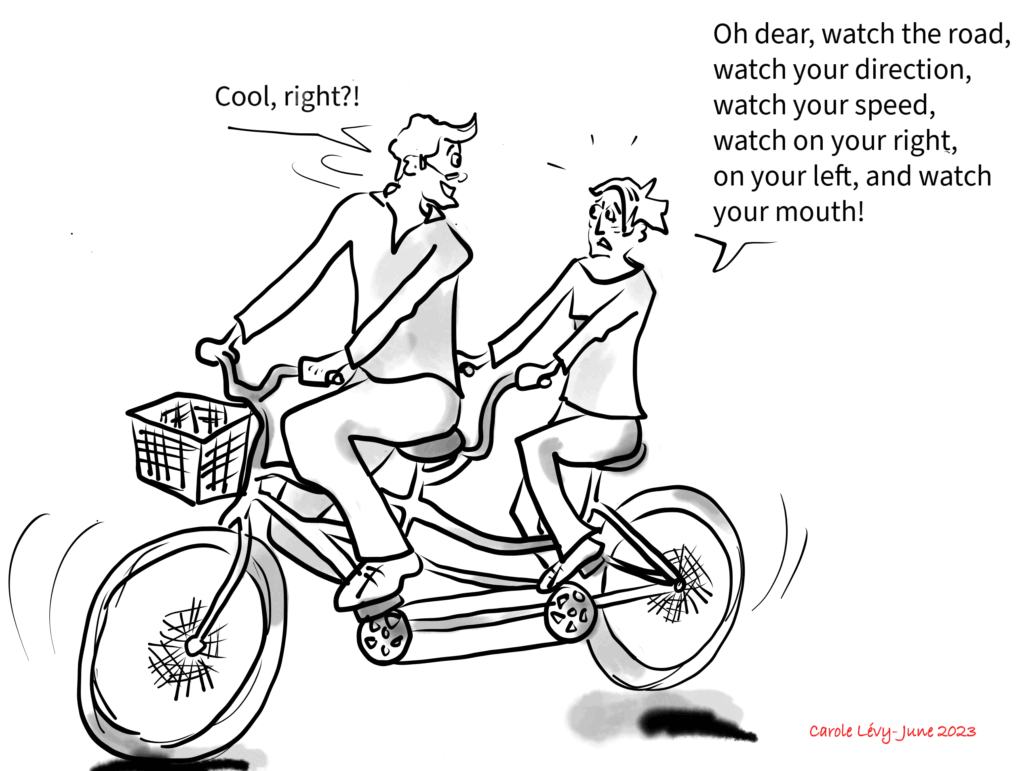
But this Sunday afternoon, when we were getting ready for a zoom presentation on Monday morning, JP was so nervous that I could hear him sighing in the kitchen to force himself to relax. In the past, I would have intervened and tried to “fix” the problem, but this time, I chose not to interfere.
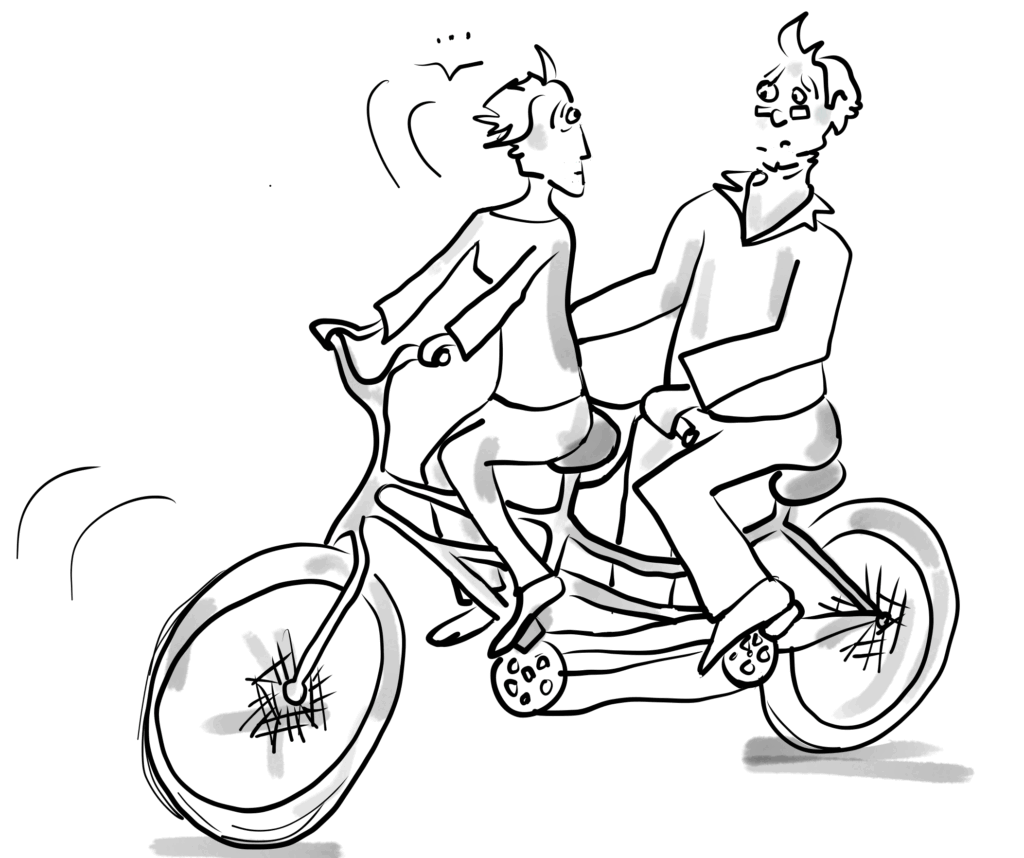
Learning and performance wounds
A lot of us have been wounded in our ability to learn and perform at school, and adapt to a mainstream model of effectiveness that I sum up as: “speak crisply, act quickly, and be right!”
In my scholarity, I was labeled a “good student,” capable of meeting the school standards and demands, focusing on my tasks, learning by heart, and being self-motivated in doing my homework. Except that I was terrified of failing, especially mathematics that I couldn’t readily understand. I was lucky to have a few smart teachers who encouraged me to think and develop my intellect, but nobody emphasized not being afraid of failing. I would have probably become professor of French literature if my debilitated fear and other life circumstances hadn’t derailed me, leading me to atrophy my appetite for learning and taking risks. But as I have often shared in my blogs, I was able to reclaim my agency as a young adult and relearn to learn.
Yet, when I feel pressure to perform, which is 93% of the time, my fear of failure kicks up in the red zone of my brain.
My strategy to manage performance anxiety has been to control-to-a-fault by doing a maximum of preparation and research in order to write the “perfect script.” Then rehearse, rehearse, rehearse to integrate my material, and show up with apparent ease and calm energy. It has often worked. My creative process has been pro-active and timely, but obsessive, solitary, and stressful, leaving me apprehensive of the next performance, and increasingly depleted.
When I’m working with JP, my internal mechanics worsen, and I’m compelled to fix JP’s flaws. I give abundant straightforward feedback – “do this, don’t do that” – attempting to be supportive, but creating more pressure and resistance than excitement.
Surely, giving feedback can be a disguised attempt to create certainty, as well as gain back the control that we inevitably lose whenever we collaborate with others.
Leaning into the wounds
JP’s scholarity, as a child and young adult, was equally painful though different than my own. He had a hard time sitting still and focusing on the classroom. Learning by heart lists of verbs or poetry (French pedagogy of the 60’s-70’s) was torture. He was intellectually smart and curious but needed to move his body and be outdoors – probably a coping mechanism from his unstable childhood. Today, he would probably be diagnosed with ADHD (Attention Deficit/Hyperactivity disorder). Since he couldn’t perform according to school standards, he thought that there was something wrong with him, and had low expectations for himself. Until one of his professors, a woman, found a way to successfully engage him in mathematics. He could find solutions to problems, see progress in his effort and became quite good in mathematics.
He chose to be a professor of physical education, however, and a golf teacher, to adapt to his needs to move his body, be outside and be independent. Like me, later in his career, he became interested in adult development and the notion of fulfilling one’s whole potential – reclaiming all the parts of our self that we have abandoned.
For a long time, he also thought he didn’t have performance anxiety – like I had – because his strategy to manage his fear of failure was avoidance and a minimum of preparation. Instead, he developed a knack for nonchalant improvisation.
In a fast changing and complex world that requires leaders to be nimble and adaptive, JP’s ability to stay calm and present in the face of uncertainty is a superpower.
But there is a downside to any strategy designed to avoid fear and discomfort. We coast, become stagnant and then inevitably shrink.
We don’t need to constantly run a race of personal growth to stay relevant. It’s enough to stay aware of what we’d genuinely like to see happen, compare it to what we can actually do, and strive to close the gap.
JP realized that if he wasn’t anxious, it was because he wasn’t leaning into his learning gaps. They were too scary to face until his desire for being at service became greater than his fear.
A process for generative partnership
We both agreed that our old coping strategies were limiting and damaging. I couldn’t exhaust my energy by over-controlling JP and my PowerPoint presentations, and JP couldn’t let me down by avoiding the performance pressure inherent in preparation and learning gaps.
At some point, we sat down, and took stock. We recognized each other’s strengths, owned our counterproductive tendencies, and acknowledged the impact on each other, committing to practice something different.
Nothing new under the sky; it’s always the same process of taking responsibility and recommitting to do better.
Among our intentions and practices: I needed to stop jumping to judgmental conclusions, thinking that my way was always the right way. I needed to stop bruising JP’s feelings. I needed to listen to understand and integrate his point of view; show my trust and my appreciation for the strengths he has, and that I don’t have (like attention to details). He needed to release his own need for control, take the risk to ask for help, while trusting my intentions even when my tone sounded critical. He needed to listen too, communicate more, and stay engaged in the face of difficulties. He needed to put work into his preparations.
In our team system, we needed to redistribute the palette of emotions: For me that meant gaining in nonchalance, and for him the challenge was tolerating some degree of healthy anxiety – the type we feel when we want to give our best effort because we care.
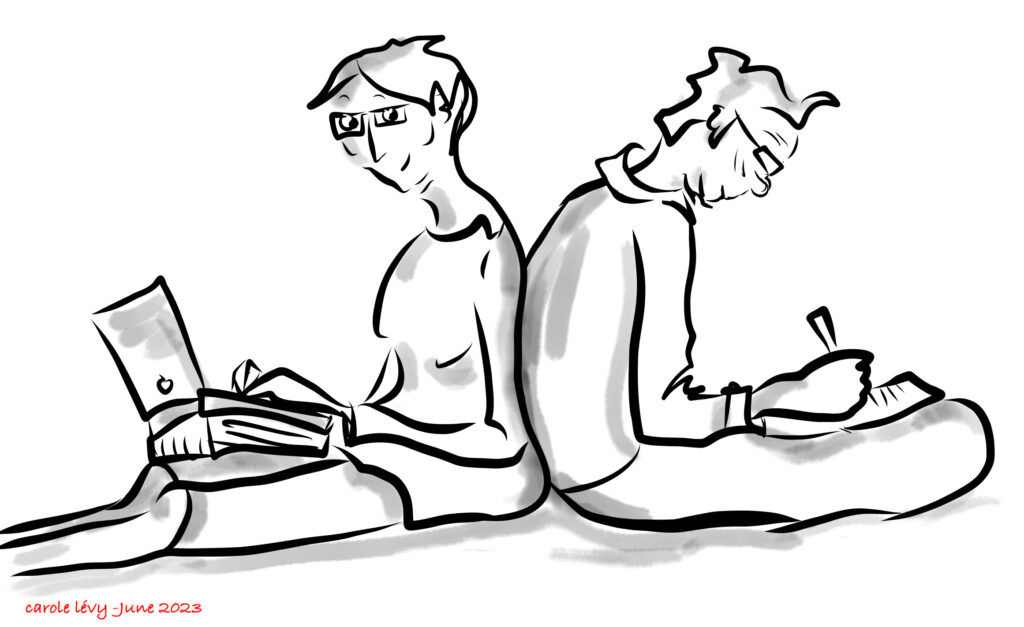
Having each other’s back
That’s why, this Sunday afternoon when JP told me that he was anxious, I didn’t have the inclination to fix him. I wanted him to know that I had his back. The solidity of our partnership was more important than the particular outcome with our client.
So, I told him “If tomorrow you blank, bumble, hum and haw, it will be okay. Permission to fail.” He said that zoom wasn’t his comfort zone, and he was afraid of letting me down. I said that he had done his best to prepare, and he wouldn’t let me down.
He went outside to run in nature and came back fresh. The Monday meeting went great. We both felt in the flow, able to play with the designed content and add ideas we hadn’t thought about before. Creativity had kicked off in the green zone of our brain.
“Permission to fail” isn’t a magical formula to apply without condition; it doesn’t replace the process of knowing each other, agreeing on shared goals, and judicious preparation. But it’s a signal that we have each other’s back. And when we have each other’s back, that’s when the real fun starts.
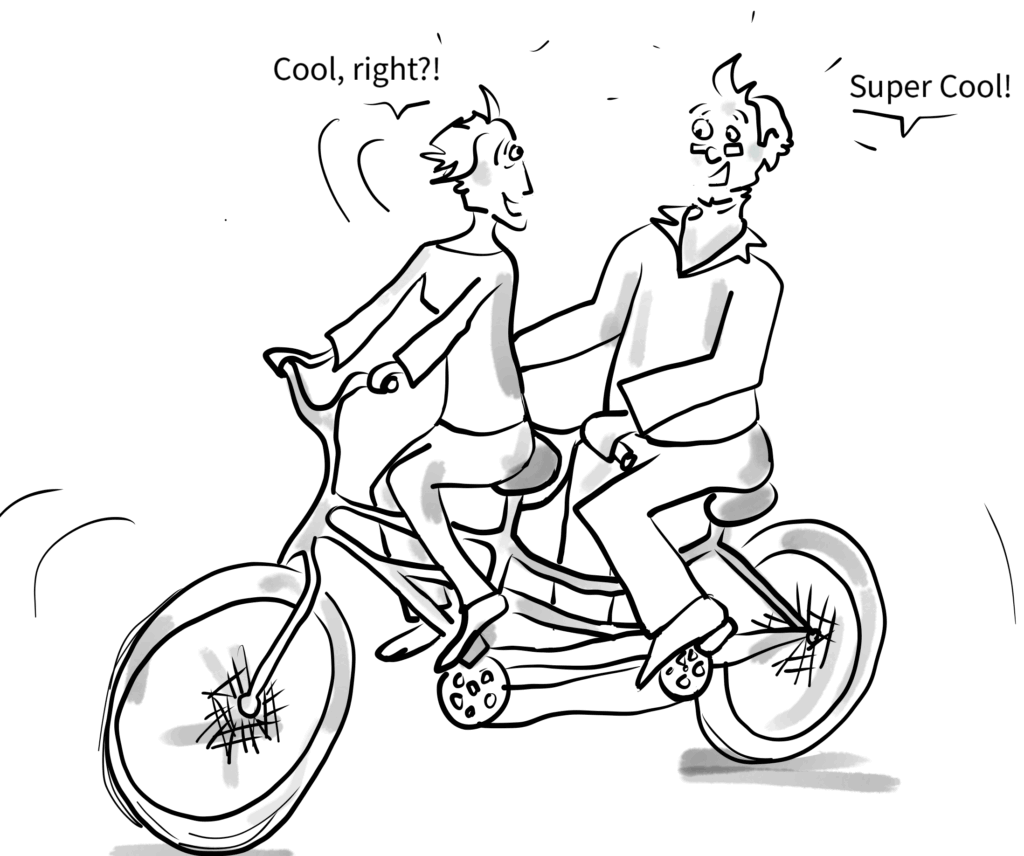
Ps: I had to shut down the function “leave a comment” because of the number of spams I was receiving. Please, don’t hesitate to reach out via email if you’d like to comment or if you have questions. I cherish communication and connection!

